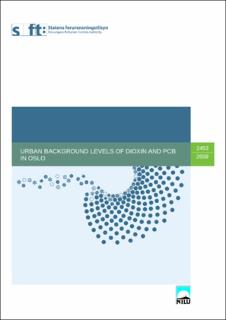| dc.description.abstract | Urban areas have been identified as major sources for airborne dioxins and PCB. Since there are no recent measurements of airborne dioxins and only few of PCB, measurements of these compound groups were initiated by SFT in late 2007 at in Sofienbergparken. The average dioxin concentration of 19 samples was 28,2 TE (WHO) fg/m^3 (4,80 - 86,5 TE (WHO) fg/m^3). The average PCB-7 concentration of 19 samples was 31,8 pg/m^3 (15,3 - 61,9 pg/m^3). The air concentrations of dioxins and PCB measured at Sofienbergparken are in the same range as measured at other urban background stations around the world. There is a remarkable reduction of the dioxins concentrations from 1989 to 2007 with 3 times lower concentrations today. The huge variability of the dioxins concentration which correlates strongly with reverse temperature, is a strong indication that wood burning for household heating is a major source for airborne dioxins. Traffic related emissions and atmospheric long range transport do not seem to contribute significantly to the dioxins level at this station. This conclusion agrees very well with the findings of Statistics Norway which calculated that household heating stands for about 20 % of the total Norwegian dioxin emission to air (7 g of about 34 g in 2000). In order to reduce the emissions of dioxins from household heating it is essential to use clean firewood only. Burning of newspapers, milk cartons, plastic, and especially impregnated wood must be avoided. The PCB concentrations is, compared to dioxin concentrations, less variable and do not correlate to any of the measured meteorological parameter. This fact indicates that the emission sources for PCB are spread and diverse and not as dependent on temperature as for dioxins. | |
